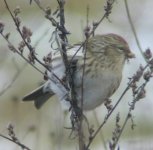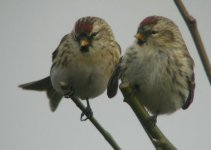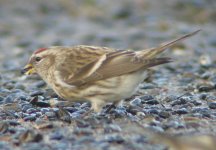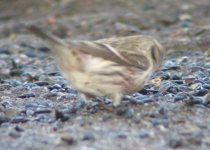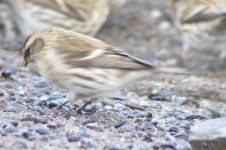Just been sent a PDF file re Redpoll identification, the stuff on UTC streaking is interesting...
''Both species have white undertail-coverts. On some exilipes, they are
entirely unmarked, but most show long, narrow, dark grey streaks on the
longest feathers. The longest undertail-coverts of C. f. flammea have broad,
dark, lanceolate central streaks, giving them the appearance of being
bordered with white, rather than white with a thin, dark central line.
Though an overlap in streak-width occurs, the extremes are diagnostic.
In Swedish Lapland, the streaks on the longest undertail-covert averaged a
maximum of 1.3 mm wide for 211 exilipes and 3.8 mm wide for 636 C.f.
flammea. Only five flammea possessed a streak less than 2 mm wide (Molau
1985). There must, however, be no doubt that it is the
longest undertail-covert that is being studied''
I'll go back and check the pics, but didn't the bird have quite a large, thick streak on the longest UTC??
D
|




